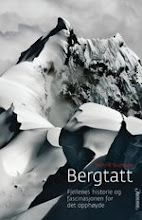Most people involved in science outreach may, from time to time, need advice about how to improve. Be it writing techniques, language skills or target groups. Indeed, there are many books you can consult on this topic. Still, the basic ideas, the very foundations of the article, are left for the author. At least that’s what I though until I found the book Encyclopaedia of Article Ideas on a second hand market recently. The book was written by Leslie V. Heald, and was published in 1946. With a small size and neutral blue cover, it didn’t make much of an impression. It smelled of ‘old book’ and appeared to have been left unopened for a number of years.
I opened it, and realized that I had discovered a gem. The book turned out to be a register of ideas about what to write articles about. It really covered ground, spanning thematically from art to psychology, from homely affairs to the mysteries of science.
Instantaneously, I understood that with this book, I would be able to fill my blog with exceptional article for years to come. The possibilities seemed endless.
It cost less than two dollars. What a coup!
There are several ways to use the book. You can look up your favorite topic and get ideas about how to target the article. Or you can freely combine themes from different topics, and make totally new concepts. Heald presents an example of how this can be done, and launch the themes home/furniture and crime/swindle, and voila, we get an article about “Famous swindles in costly furniture”. Simple, but elegant.
I turned the pages and arrived at a theme closer to my own field of interest: Conflicts between Man and Nature. Here, the very key words were listed as: Strange, continual, senseless, when man was a hunted animal, man’s struggle to supremacy, fighting snakes, stopping runaway horses (famous examples).
This last point took me somewhat by surprise, as I didn’t immediately associate runaway horses with any struggle with Nature. But here the book showed its strengths, as I never would have come up with this idea myself.
A few pages later I came across a section about scientists. This is inspiring, just read the following key ideas: Queer, great, lucky, poor, female, genius, famous, eccentric, tragic, rich, struggling, great british scientists. Heald goes on and elaborates on scientists and how to make great articles:
- Scientists who stuck by their theories. Though others did not believe.
- Genius by accident.
- Scientists who died for knowledge.
- They risked their lives for science.
- They experimented on themselves.
- Are scientists supermen?
As you see, Heald laid the table for a number of article-goodies. I won’t give you more examples – for obvious reasons – but I guess you have more than enough to get started.
One final piece of advice. Leslie Heald emphasize the endless possibilities in adding the words ”mysterious” and ”strange” in the title of your latest piece. I can’t help to agree when he concludes that “the idea speaks for itself”.


















